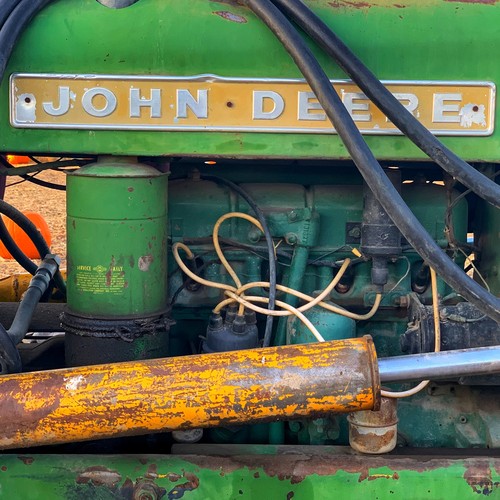John Deere to use CBRS for private 5G networks in its factories
The company, which paid $545,999 for five CBRS priority access licenses in Iowa and Illinois, plans to roll out the technology in its factories in 2022.

When the FCC revealed the winners of its recent 3.5GHz CBRS spectrum auction, nestled among the usual names of wireless operators and cable companies was Moline, Illinois-based tractor company John Deere.
While John Deere may seem like an unlikely builder of wireless networks, last spring the company used experimental licenses in the 3.5GHz CBRS band to deploy private LTE networks and see whether the company could use the networks to streamline its manufacturing processes as well as develop farming applications.
Now the company is ready to fulfill its wireless vision: It plans to build private 5G networks using the CBRS licenses that it won. John Deere paid $545,999 for five CBRS licenses in five counties including Rock Island County in Illinois and Black Hawk County, Scott County, Dubuque County and Des Moines County in Iowa.
According to Tami Hedgren, manufacturing lead for tractors and combines at John Deere, the company is currently working on a request for proposal (RFP) for the project to find vendors to help it build these networks. "We want to understand what our options are," Hedgren said.
The company plans to roll out these 5G private networks in 2022.
Short-term goals vs. long-term aspirations
John Deere has both a short-term and long-term vision for how it will use its CBRS licenses, Hedgren added. In the short-term, the company will simplify its manufacturing facilities.
In Rock Island County, Illinois, the company makes combines. In Black Hawk County, Iowa, it manufactures tractors. In Des Moines, Iowa, the company makes sprayers and cotton pickers. Dubuque, Iowa, is where John Deere's forestry and construction division is headquartered, and Scott County, Iowa, is also home to some of the company's construction business.
Hedgren said that today many of John Deere's factories are very complex and have miles of embedded Ethernet cables connecting to Wi-Fi drop points that are in factory ceilings – and all of these hard-wired elements act as barriers. "When you bring in a new product or a new program, we have to rearrange the factory. And when you have Ethernet drops, this creates a barrier to optimizing your workflow," Hedgren said.
With 5G instead of Ethernet, the company believes it can streamline its manufacturing process and accelerate its ability to make new products. Plus, Hedgren believes that John Deere will also be able to use 5G to make its factories safer for employees.
For example, she said that currently the factories are set up to make sure everything is operating safely and ergonomically for employees, but it can take time to find and fix problems to the setup. With 5G, John Deere will be able to use video analytics to determine quickly if a piece of equipment needs to be adjusted. Also, if a product is being made with a flaw or defect, the company will be able to adjust the equipment quickly to resolve any issues.
In the long-term John Deere has much bigger aspirations for 5G. Hedgren said that the company believes it can incorporate other technologies such as edge computing, analytics and even autonomous devices that will make it possible for the tractor company to conduct asset tracking and inventory management. She also envisions being able to automate some of the company's processes that today require a lot of manpower.
However, that doesn't necessarily mean it will result in fewer workers. "It really depends on what we do in terms of automation," Hedgren said. "Our goal is to use predictive analytics to drive us to the next level."
That could mean making more combines, or just making better combines. "Every single day we want to produce the perfect combine," she added.
— Sue Marek, special to Light Reading. Follow her @suemarek.
About the Author(s)
You May Also Like











